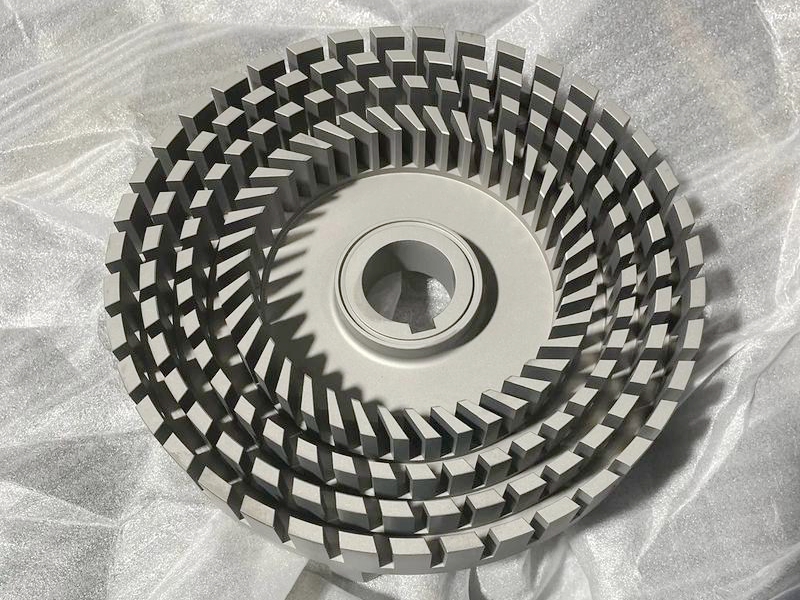Nitriding: Enhancing Surface Hardness and Wear Resistance for Steel Parts
Introduction
Nitriding is a thermo-chemical surface treatment that significantly enhances the surface hardness, wear resistance, and fatigue strength of 3D printed steel parts. By diffusing nitrogen atoms into the surface of the metal at relatively low temperatures (typically 480–580°C), nitriding forms a hard nitride layer without adversely affecting the core properties of the material. This process is especially valuable for automotive, aerospace, industrial, and tooling applications where components require superior surface durability and extended operational life.
This blog explores the nitriding process, its key benefits for 3D printed steel components, applicable materials, industrial application cases, and comparisons with alternative surface treatments. This guide will help you determine when nitriding is optimal for strengthening your custom 3D printed parts.
How Nitriding Works and Quality Assessment Criteria
Nitriding involves exposing steel parts to nitrogen-rich environments (typically ammonia gas, plasma, or salt baths) at controlled temperatures. Nitrogen atoms diffuse into the steel's surface, forming hard nitrides (such as Fe₄N and Fe₂–₃N), dramatically increasing surface hardness and wear resistance.
Key Quality Assessment Criteria:
Surface Hardness: Post-nitriding surface hardness typically ranges from 900 to 1200 HV (Vickers Hardness), depending on the base material and process parameters, measured per ASTM E384.
Case Depth: Effective case depth (the depth to which hardness significantly improves) is typically 0.1–0.7 mm, verified via microhardness profiling (ASTM E1077).
Fatigue Resistance: Nitrided surfaces exhibit improved fatigue life (up to 50% increase) due to compressive residual stresses.
Dimensional Stability: Nitriding causes minimal distortion because of the relatively low processing temperatures compared to carburizing or quenching, critical for precision 3D printed components.
Nitriding Process Flow and Key Parameter Control
Nitriding processes require precise control over several steps to ensure optimal surface enhancement:
Surface Preparation: Parts are cleaned and sometimes pre-polished to remove oxides, contaminants, and surface impurities, achieving a clean Ra < 1.0 µm surface.
Preheating: Parts are heated gradually to prevent thermal shock and ensure uniform temperature distribution.
Nitriding Treatment:
Gas Nitriding: Parts are exposed to dissociated ammonia at 500–580°C for 10–80 hours.
Plasma Nitriding: Ionized nitrogen plasma at similar temperatures enhances nitrogen diffusion and allows better process control.
Salt Bath Nitriding: Immersion in nitrogen-containing molten salts for rapid and uniform nitriding.
Cooling: Controlled cooling in an inert gas atmosphere prevents oxidation and ensures dimensional stability.
Post-Treatment Inspection: Inspection includes microhardness profiling, case depth measurements, and visual assessment for uniformity and absence of distortions.
Key parameters include nitriding temperature, time, atmosphere composition, and nitrogen potential, all critical to tailoring surface properties for specific applications.
Applicable Materials and Scenarios
Nitriding is primarily suited for ferrous alloys, including tool steels, stainless steels, and low-alloy steels frequently used in 3D printing. Below is a table highlighting typical materials, applications, and relevant industries:
Material Type | Common Alloys or Grades | Applications | Industries |
|---|---|---|---|
Dies, punches, forming tools | Automotive, Industrial | ||
Shafts, gears, crankshafts | Automotive, Aerospace | ||
Aerospace fasteners, high-load bearings | Aerospace, Defense |
Nitriding is especially effective for parts exposed to repetitive stress, friction, and demanding operating conditions, ensuring improved operational life without the risk of significant distortion.
Advantages and Limitations of Nitriding for 3D Printed Parts
Advantages:
Superior Surface Hardness: Dramatic improvement (up to 1200 HV) without affecting the part's core toughness.
Enhanced Wear and Fatigue Resistance: Up to 50% increased fatigue life due to compressive residual stresses.
Minimal Dimensional Change: Essential for precision 3D printed components that require tight tolerances.
Improved corrosion resistance is especially true when combined with stainless or precipitation-hardening steels.
Limitations:
Material Restrictions: Best suited for steels containing nitriding elements (Cr, Mo, V, Al); less effective on pure irons or non-ferrous metals.
Extended Processing Time: Deep case depths require prolonged cycle times, sometimes exceeding 20–50 hours.
Surface Preparation Sensitivity: Surface cleanliness and uniformity are critical; otherwise, nitriding effectiveness diminishes.
Nitriding vs. Other Surface Treatment Processes
Here’s a technical comparison of nitriding with alternative surface treatments for hardening and wear resistance:
Surface Treatment | Description | Surface Hardness | Dimensional Stability | Corrosion Resistance | Typical Applications |
|---|---|---|---|---|---|
Diffusion of nitrogen into steel surfaces | 900–1200 HV | Excellent (minimal distortion) | Moderate to good (depends on alloy) | Aerospace gears, automotive shafts | |
Carbon diffusion surface hardening | 700–950 HV | Moderate (can cause distortion) | Moderate | Heavy-duty gears, automotive parts | |
Ionized nitrogen plasma diffusion | 900–1300 HV | Excellent | Good to excellent | High-precision components | |
Metallic layer deposition | Depends on coating (e.g., 500–700 HV) | Very good | Good | Decorative and corrosion-resistant coatings |
Application Cases for Nitrided 3D Printed Steel Parts
Nitriding delivers substantial performance advantages across several critical applications:
Aerospace Components: Aircraft landing gear parts nitrided to improve surface hardness and fatigue life by 40%, enhancing safety and durability.
Automotive Powertrain Systems: Nitrided gears and crankshafts exhibit enhanced wear resistance, reducing engine maintenance intervals by 30%.
Industrial Tooling and Dies: Forming dies and extrusion tools can withstand high-stress environments without significant dimensional change, improving operational uptime.
Defense Components: High-strength nitrided parts maintain mechanical properties under repetitive loading, improving part longevity in critical applications.
FAQs
What is the main benefit of nitriding for 3D printed steel parts?
Which materials respond best to nitriding treatment?
How does nitriding compare to carburizing for surface hardening?
Can nitriding be applied to all 3D printed metals?
What industries benefit most from nitrided 3D printed components?

